Restoring Faith and Renewing the Priesthood
Kevin Wells, a former sportswriter in Major League Baseball, has authored a remarkable and timely book called "Priests We Need to Save the Church." In his book, Kevin delves into a significant personal struggle he and his wife faced due to infertility, as well as the advice given by his uncle, Msgr. Thomas Wells, during that difficult time. He also addresses the unfortunate circumstances surrounding Msgr. Wells' untimely passing. The book further evolves in response to the Church crisis, as Kevin attempts to address the question, "What kind of priests do we need to save the Church?" Throughout the pages of this book, readers will discover a wealth of information. We highlight some of Kevin’s key points in this interview.
Seeking Solace in Suffering: Monsignor Wells' Wise Guidance
Kevin's upbringing took place in a large, devout Irish Catholic family, where his mother stood out as a saintly figure. Kevin and his wife yearned for children, but sadly learned that they were unable to conceive. While seeking guidance, Kevin's wife was informed by a priest that in vitro fertilization was permissible as long as her conscience was clear. However, this technique conflicts with the teachings of the Catholic Church. Struggling with their predicament, they turned to Kevin's uncle, Monsignor Thomas Wells, for advice. With great sensitivity, he explained to her the role of suffering in our lives, ultimately bringing solace to her soul. As they navigated this challenge, they embraced the path of adoption and are now blessed with three children. The news of Monsignor's tragic murder shocked the community, as he had become a highly respected clergyman.
8 Essential Characteristics Priests Need to Right the Ship
News of the Church scandals pervaded the media throughout this time, deeply troubling Kevin. As he prayed and pondered, he formulated eight essential characteristics that priests require to rectify the current state of the Church, which he refers to as a "ship." The first characteristic entails the priest's profound adoration of the Eucharistic Jesus. A priest's mission hinges upon a deep love for our Eucharistic Lord and a genuine desire to hear confessions and forgive sinners. The second characteristic centers around devotion to Mary, who serves as our guide to Jesus. As the one who carried Jesus in her womb, she plays a crucial role in leading us to Him. The third characteristic emphasizes the priest's devout prayer life, as prayer constitutes our means of communication with God. The fourth characteristic encompasses the priest's willingness to embrace a sense of victimhood, akin to Christ's selflessness and sacrifice, where he dies to self and generously serves others. Being a father represents the fifth characteristic, mirroring the Good Shepherd's care for his flock. The sixth characteristic underscores the importance of a persistently available priest, understanding that the vocation of priesthood involves the salvation of souls, which may necessitate inconvenient timing. The seventh characteristic highlights the priest's commitment to preach divine truth, guided by the Holy Spirit in all his endeavors. Finally, the eighth characteristic entails the priest's immediate and responsive involvement in people's lives, acting as Jesus Christ Himself would act when confronted with a problem.
An Important Read for Laity and Clergy Alike
Although this book primarily addresses priests, it is also relevant for the laity. While we cannot preside over Mass or administer the Eucharist, nor can we hear confessions, we are all called to pursue holiness and strive to carry out God's will.
Kevin's bestselling book is readily available for purchase online at ThePriestsWeNeed.com, SophiaInstitute.com, and Amazon.com. To book Kevin for a speaking engagement, learn more about his work, or connect with him directly, please visit ThePriestsWeNeed.com.
You might also like...
What is an Average Day for a Marian Priest? Fr. Chris Alar explains what they do.
In today’s interview, we hear of the healing of Joe Risi. He describes how the healing occurred through praying the Divine Mercy Chaplet, and details how events unfolded.
Kendra Tierney is a Catholic wife and mother of ten. She has developed a website to help young families and grandparents instill the Faith in their children and grandchildren, and living their Faith around the liturgical calendar year.




